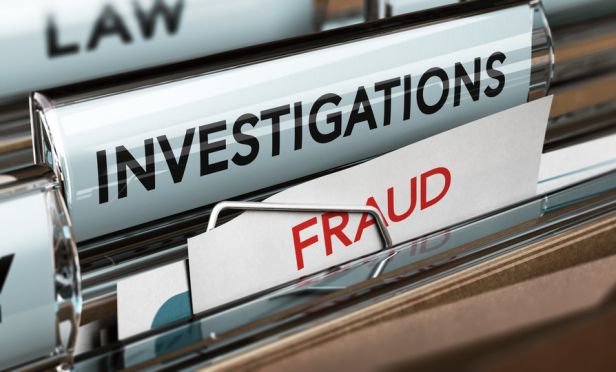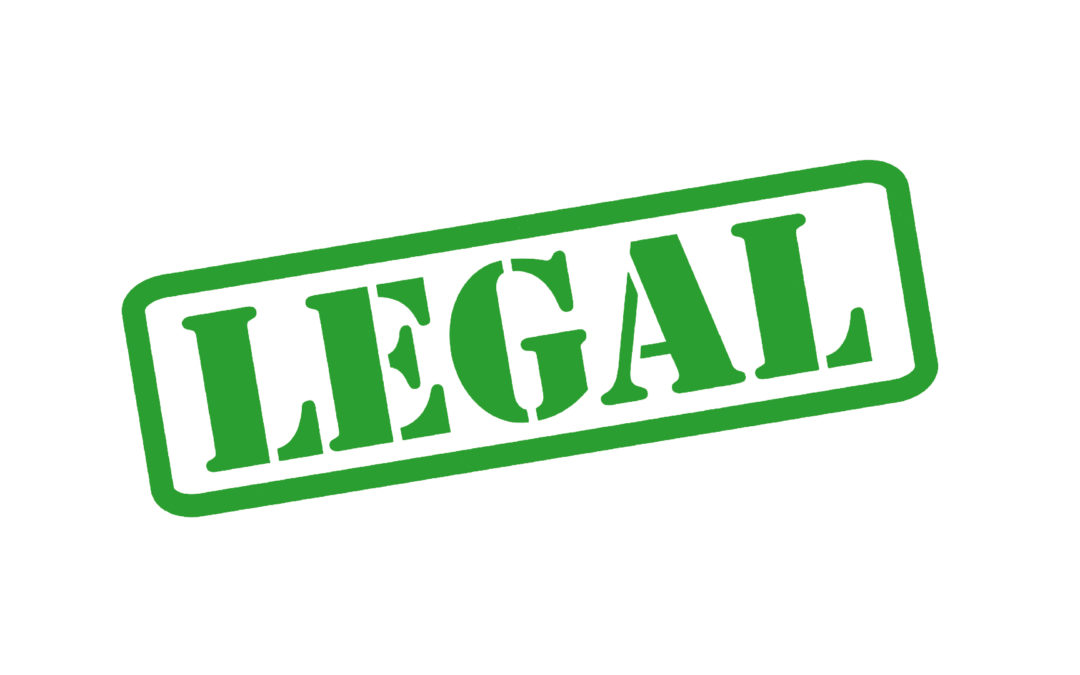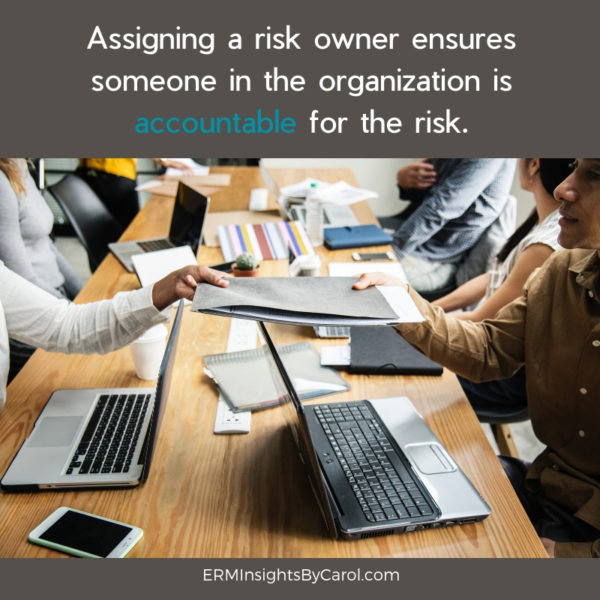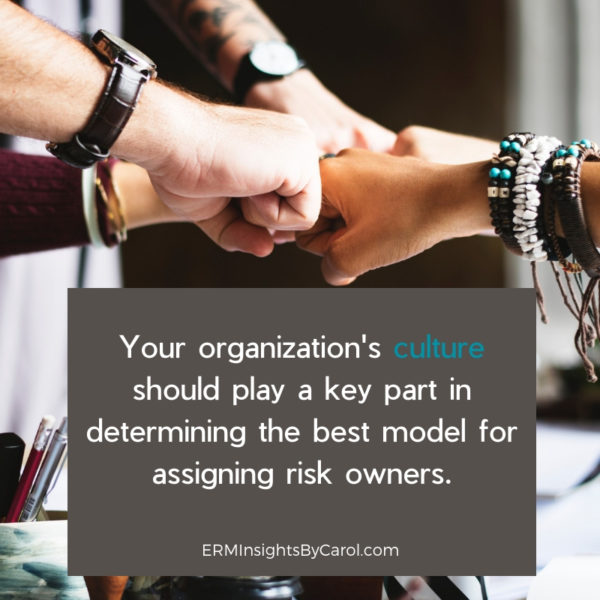
Mar 13, 2019 | Cybersecurity
Cybercrime, DDoS, IoT – what should you pay attention to next year?
1. Increase in crime, espionage and sabotage by rogue nation-states
With the ongoing failure of significant national, international or UN level response and repercussion, nation-state sponsored espionage, cyber-crime and sabotage will continue to expand. Clearly, most organisations are simply not structured to defend against such attacks, which will succeed in penetrating defences. Cybersecurity teams will need to rely on breach detection techniques.
2. GDPR – The pain still to come
The 25th of May, 2018 has come and gone, with many organizations breathing a sigh of relief that it was fairly painless. They’ve put security processes in progress and can say that they are en route to a secure situation – so everything is OK?
We are still awaiting the first big GDPR penalty. When it arrives, organizations are suddenly going to start looking seriously at what they really need to do. Facebook, BA, Cathay Pacific, etc. have suffered breaches recently, and will have different levels of corporate cost as a result, depending on which side of the May 25th deadline they sit. So GDPR will still have a big impact in 2019
3. Cloud insecurity – it’s your head on the block
Cloud insecurity grew in 2018 and, unfortunately, it will carry on growing even more in 2019. Increasing amounts of data are being deployed from disparate parts of organizations, with more and more of that data ending up unsecured.
Despite the continual publicity around repeated breaches, the majority of organizations do not have good housekeeping deployed and enforced across their whole data estate in the cloud. To give an idea of the scale, Skyhigh Networks research indicated that 7 percent of S3 buckets are publicly accessible and 35 percent are unencrypted.
4. Single factor password – the dark ages
As if we need the repetition, single-factor passwords are one of the simplest possible keys to the kingdom (helped by failure to manage network privileges once breached). Simple passwords are the key tool for attack vectors, from novice hackers right the way up to nation-state players. And yet they still remain the go-to security protection for the majority of organizations, despite the low cost and ease of deployment of multi-factor authentication solutions. Sadly, password theft and password-based breaches will persist as a daily occurrence in 2019.
5. Malware – protect or fail
Ransomware, crypto mining, banking Trojans and VPN filters are some of the key malware challenges that continue to threaten businesses and consumers. Live monitoring by Malwarebytes, Kaspersky and others, has shown that the mix of threats varies during the year, but the end result of malware threats will be a bad 2019.
Increasing sophistication will be seen in some areas such as ransomware, alongside new malware approaches and increased volumes of malware in other areas. Traditional AV will not provide sufficient protection. Solutions that have a direct malware focus are essential for organizations, alongside tracking of network activity (in and out of the network). With Cybersecurity Ventures predicting that ransomware damage costs will exceed $11.5 billion by 2019, it certainly won’t be going away. Oh yes, and make sure that your backup plan is working and tested.
6. Shift in attack vectors will drive cyber hygiene growth
The ongoing shift of attack vectors, from the network to the user, is causing a reappraisal of how to manage security. Driven partly by the shift in boardroom awareness, and partly by GDPR, many organizations are recognizing, perhaps belatedly, that their users are their weakest link.
Not only is there a greater awareness of the insider threat from malicious current and ex-staff, but there is also a growing recognition that staff cyber awareness and training is a crucial step in securing this vulnerable area. The response from organzations will take the form of cyber education, coupled with testing, measuring, and monitoring staff cyber behavior. Increasingly, Entity and User Behaviour Analytics (EUBA) systems will be adopted, alongside training programs and automated testing, such as simulated phishing and social engineering attacks.
7. IoT – the challenge will only increase
We’ve already seen some of the security challenges raised by IoT, but 2019 will significantly demonstrate the upward trend in this area. Driven by the convenience and benefits that IoT can deliver, the technology is being increasingly deployed by many organizations, with minimal thought by many as to the security risks and potential consequences.
Because some IoT deployments are well away from the main network areas, they have slipped in under the radar. In the absence of a standard, or indeed a perceived need for security, IoT will continue to be deployed, creating insecurity in areas that were previously secure. For the greatest percentage of IoT deployments, it is incredibly difficult or impossible to backfit security. This means that the failure to segment on the network will further exacerbate the challenges IoT will create in 2019 and beyond.
8. Increasing risks with shadow IT systems and bad housekeeping
Shadow IT systems continue to proliferate, as do the number of applications and access points into systems, including legacy applications. In the case of shadow IT systems, these are indefensible as they are; and in the case of increasing applications and access points, if they relate to old or abandoned applications, they are difficult to identify and defend.
In both cases, these are an easy attack surface with significant oversight, internal politics and budget challenges, and were previously seen as a lower priority for resolution. However, there has been both an increased awareness of the opportunity for attack via this route, and an increase in the number of attacks, which will accelerate in 2019.
9. DDoS – usually unseen, but still a nightmare
DDoS is the dirty secret for many organizations and attacks will continue to grow in 2019, alongside the cost of defending against them. Nevertheless, DDoS attacks aren’t generally newsworthy, unless a big name organization is involved, or the site is down for a long time. And, of course, the victim does not want to draw attention to their lack of defence. That’s not good for custom or for share prices.
The cost of launching an attack is comparatively low, often shockingly low, and the rewards are quick – the victim pays for it to go away. Additionally, cryptocurrencies have aided the money transfer in this scenario. Yet the cost for the victim is much higher than the ransom, as it involves system analysis, reconstruction and, naturally, defending against the next attack.
10. Cybersecurity in the boardroom
Advertisement
A decade, perhaps two decades, late for some organisations, cybersecurity is now considered a key business risk by the board. 2019 will see this trend accelerate as boards demand clarity and understanding in an area that was often devolved as a sub-component of the CISO’s role, and was not really a major topic for the boardroom. The financial, reputational and indeed C- Suite employment risks of cyber breach will continue to drive board focus on cybersecurity up the agenda.
Author: Ian Kilpatrick
Source: ITProPortal

Mar 6, 2019 | Informative
Employers are on the front lines of nipping one particular sort of workers compensation fraud in the bud: the incident that never happened or one that is being exaggerated, according to panelists on a session on fraud at the 38th annual International Risk Management Institute Construction Risk Conference.
Weighing in on what employers can do to prevent fraud at the onset of a claim, especially on a construction site where the landscape alters daily and the workers — witnesses — on the site can change from day to day, the first step is to gather facts with an effective reporting system and immediate documentation, the presenters said Monday at the conference in Houston.
“It’s important when these claims occur to collect information, because it might not be there when you go back to get it,” said Melissa Schultz, co-founder of Chicago-based SitePatterns LLC, which markets incident-reporting software for the commercial construction industry.
Simplified and immediate incident reporting is a must, said Ms. Schultz, who spent several years on construction sites in risk management and workers compensation.
“You want to make sure (your system) is asking the right questions … You don’t want (the form) to be 15 pages long. You want something they can complete, easily fill out and is easy to understand,” she said. “It’s important that you get those reports early and review them.”
Witness statements are just as important, as subcontractors who witnessed the incident might not be working on-site later on when an employer needs more facts on a claim that is likely being inflated, according to presenters.
“Pay attention to the witness statements,” said Patrick Duggan, Chicago-based vice president of risk for Power Construction Co. LLC. Mr. Duggan said employers sometimes go back to investigate when a simple claim becomes more complex — with a surgery looming or a plaintiff’s attorney asked for a large lump sum — and it’s sometimes too late to gather facts.
Ms. Schultz said to make sure witnesses are separated and provide accounts individually — as stories start to sound “more similar” the closer the witnesses are before reporting.
Making it routine for site safety coordinators and other supervisors to take photographs of scenes is another step, she said. “Job sites changes quickly … if you go back days later to take photos, chances are it will not look the same,” she said.
She recalled one claim where a subcontractor reported that he fell down a staircase. A supervisor was able to take video of the stairwell with his phone immediately after the incident. Weeks later the injured worker’s attorney called with a claim that the stairwell was full of “gushing” water, she said.
“I gladly shared that video with that attorney,” Ms. Schultz added.
Incident-reporting culture on-site is another factor in preventing fraudulent claims, she said. “You want to make sure you communicate the process regularly,” she said. “You want to make sure that you remind the field how to fill out that report.”
Supervisors can become more used to the incident-reporting process and can think of it as “more than just checking the boxes,” she said. “They start anticipating the things you will need,” she added. The supervisor who took video of the stairwell, for example, did so immediately without having been asked to do so, she said.
Brian Koch, Chicago-based partner/shareholder with Wiedner & McAuliffe Ltd., said early documentation, including photographs, can also work in reverse: helping to prove a legitimate claim that an employer deemed possibly fraudulent, thus cutting down on legal costs.
He told the story of a subcontractor who was injured within his first few hours on a job site — sometimes a telltale sign of fraud, but not in this case, he said. A photograph of a tear in some anti-slip skids on the floor helped show how the worker did, in fact, trip. Attorneys saved the company “a lot of energy and expense” in seeing what happened immediately with photos taken of the site as evidence — part of a claim that the worker would have likely fought if the employer had denied it, according to Mr. Koch.
Author: Louise Esola
Source: Business Insurance

Feb 27, 2019 | RIsk Management News
It is not a risk-free proposition for nonprofit boards to make investment decisions that meet philanthropic goals. This is all the more difficult for those trustees without a background in finance. The simple answer is usually to allocate the investments conservatively and rebalance periodically to at least beat inflation and preserve capital. Large charities like university endowments turn to more sophisticated methods of portfolio diversification, expanding beyond stocks and bonds into vehicles like hedge funds, private equity, venture capital, and real estate.
The Conversation’s detailed article cautions that it is not enough to focus only on returns; in fact, it’s more important to consider risk-adjusted returns. In the case of digital currencies, it would have required nerves of steel for trustee investment committees to commit to pre-established decision-making processes to avoid the bitcoin crash in early 2018, after it rose by 1,318 percent against the US dollar in 2017.
These gains gave way to massive losses in the first eight months of 2018, when digital currencies plunged more sharply than the dot-coms crashed in the early 2000s.
Some charities that received massive cryptocurrency donations in 2017 may not have been able to convert them into regular money before they lost much of their value the next year. Silicon Valley Community Foundation, for example, disclosed in its 2017 audit report that for more than 45 percent of its investment assets, restrictions would prevent them from being converted to cash at any point in 2018.
The fact that charities only disclose their financial data once a year means that the scale of their at-risk wealth, as of now, is unknown.
There are more reasons than volatility to be concerned about holding onto investments of cryptocurrencies. Wallets and exchanges used to hold the investments can be hacked. Compliance issues abound. Regulators are still catching up to the IRS ruling in 2014 that treated digital currency as a form of investment property. The sweeping new tax billpassed into law last December may bring more change. Inasmuch as digital money ledgers for transactions are owned and maintained by the users of the systems rather than controlled by a government or a central bank, it is difficult to predict how government will eventually choose to manage this revolutionary type of money.
The Conversation article goes on to examine other forms of appreciated assets being given by a shrinking group of ever-wealthier donors and the “charitable middlemen” needed to help facilitate these donations.
Fidelity Charitable got 61 percent of its donations in assets other than cash in 2017. Other prominent donor-advised fund sponsors saw a similar result. Schwab Charitable obtained over 70 percent of its 2017 donations in non-cash assets. In the last month of the year, that figure was 80 percent for Vanguard Charitable.
These fast-growing charities bring a key skill: harvesting capital gains. That is, they accept tax-advantaged donations, hold onto that wealth, and—in most cases—transfer the money derived from those assets to the donor’s charities of choice when the donor asks.
For nonprofits, it could be said that today’s donor classes are creating as many challenges as solutions. As government funding continues to diminish for many of the issues addressed by the nonprofit sector, private philanthropy becomes all the more important, and along with it, the skills to properly raise, receive, and manage the forms and flavors in which it is given.
Author: Jim Schaffer
Source: Nonprofit Quarterly

Feb 20, 2019 | RIsk Management News
Falling in the middle of the risk management cycle (after developing risk appetite and tolerance and identifying, but before assessing and analyzing risks), the organization then must identify who will “own” or be responsible for a particular risk.
Although the exact definition of what a risk owner is will vary depending on the organization, it can generally be defined as a person or persons responsible for the day-to-day management of a risk. (I will talk later about when to assign a risk owner…)
Assigning an owner for these risks is important for a few reasons…
One, a designated risk owner ensures someone in the organization is accountable for the risk. If there is not one person or a group charged with managing a risk, then by default, the entire organization will own the risk, and therefore it is highly likely the risk will fall through the cracks (a/k/a nothing will be done). Having a risk owner is an important step toward ensuring that a response plan is developed and acted upon in a timely manner.
Two, risk ownership is one way for executives to not only hold individuals accountable for risks, but to show their support for ERM in general.
The third reason for appointing a risk owner is to ensure that the ERM function does not own risks.
It’s important to understand that ERM does not actually manage risks, which is a common misnomer. The role of ERM is to help facilitate a process for identifying, assessing, and analyzing risks, and to ensure that executives and other key players have the information they need to make risk-informed decisions.
The only exception to this rule is if the risk function is responsible for insurance, business continuity, or similar program. This situation applied to me when I was Director of ERM for a large Florida-based property insurance company…in this case, it was only natural for my area to be responsible for these risks. In fact, business continuity can very closely integrate with ERM, so it made perfect sense to have them under a single manager.
In what circumstance will the organization need to assign a risk owner?
Not every identified risk will require an owner. In fact, if your organization has thousands of risks identified through a bottoms-up approach, assigning a risk owner for each one will overwhelm you and your team and nothing will get done.
Instead, start with the most critical risks and then consider adding more once a workable, sustainable process is in place.
Iconic cosmetics brand Estee Lauder for example has 46 critical corporate risks where an owner has been assigned. These particular risks met several guidelines which exceeded their respective risk tolerance or could cross this threshold in the near future.
In short, a risk owner needs be assigned for risks that exceed tolerance levels that were set earlier in the risk management cycle. However, that doesn’t mean risks that are within tolerance levels should be ignored…accepted risks have to be monitored as well.
More specifically, the cumulative result of accepted risks and the inter-dependencies of risks have to be carefully considered as well. If Risk A occurs and could trigger Risk B, a risk owner should be appointed and action taken, especially if Risk B is considered critical and falls outside of tolerance levels should it occur.
You also don’t need me to tell you that things are always changing. Perhaps tolerance levels change down the road or the risk itself changes. Of course, this certainty that things change is why I’m a firm believer in having a maximum time limit for a review of both low and accepted risks to ensure nothing is being overlooked.
Risk Ownership: Key Considerations, Challenges, and Options
I could probably write an entire article or even an eBook on how an organization could go about assigning an owner for a particular risk. Before getting into different options though, there are a few key considerations and challenges I should discuss first.
Key Considerations
- Ensure there are clear definitions on roles and responsibilities in place before proceeding any further…this is one of the first and most important considerations when it comes to choosing a risk owner. As explained by Chris Corless in this article in Strategic Risk, it’s important for everyone involved to have a clear understanding of expectations when someone accepts the role of risk owner.
- Properly train on risk owner responsibilities and how they need to manage and report the risk. Think about it this way – your organization wouldn’t roll out a new time management system and not train employees on how to use it, right? Risk ownership is no different…
- Maintain consistent language throughout the firm regarding risks. Frank Fronzo of Estee Lauder explains how the company has a dictionary of terms it uses to ensure everyone is speaking the same language and stays on the same page.
Challenges
One of the most common challenges organizations face when assigning a risk owner is the tendency to give it to the highest accountable person in the organization. While this is okay for risks linked to the strategic plan, the fact is that executives and other leaders simply do not have the time to take many of these risks on. In situations like this, the individual may delegate the responsibilities of owning a particular risk to someone else with time to perform them.
In cases like this, the senior-level person becomes a risk “custodian,” meaning they still have an interest in the risk but do not fulfill the day-to-day responsibilities of an owner.
And as I mentioned earlier, risk ownership should extend down the organization chain for a couple of reasons. One reason is limited time on the part of executives and other leadership. Second to that, appointing a mid-level manager as a risk owner can play a huge part in cultivating a positive risk culturethroughout the entire organization.
Another challenge many organizations face when assigning and managing risk owners is the tendency for risk management activities to fall back within organizational silos. If this type situation occurs, the case can be made that you’re not really practicing ENTERPRISE risk management.
(Click here to learn more about risk management that occurs within a singular business unit vs. a top-level, enterprise-wide process.)
To address this challenge or avoid it altogether, a risk information system should be used that contains details about all risks the organization is managing, who the owner(s) of a particular risk is, recent activities and more. This system should be accessible by all risk custodians and owners…
During a recent conversation, a fellow risk professional mentioned that his organization uses Archer, but other commonly known software tools organizations commonly use include Logic Manager, MetricStream, CURA, and Sword Active Risk. But there are plenty of other options out there, like Aviron Financial Solutions, Audit Comply, and Vose Software, to name a few…
Options
When developing the process and choosing risk owners, company culture and the accountability structure of the organization will play a huge role…
Broadly speaking, risk ownership can be assigned to an individual or a designated risk committee.
Individual risk owner
If your organization has diverse functions and a weak collaborative culture, you will most certainly want to go with an individual risk owner. This individual (…and the risk custodian if applicable) will be the oneperson held accountable for the management of the risk they are charged with handling. I mentioned this in a way in the beginning of this article…having an individual risk owner is not only a way to hold someone accountable for a risk, it is also a way for executives to demonstrate how important they view ERM.
When assigning an individual to be the owner of a particular risk, it’s vitally important they have decision-making authority and the ability to allocate financial and human resources for the risks they are charged with managing.
Another point to consider when determining an individual risk owner is assigning accountability by position rather by name. (I personally really like this concept!) This is one key point of how Estee Lauder determines the proper owner. Assigning accountability this way ensures risks are continuously managed, even if the individual person moves on from their position.
One situation where an additional person may be involved with managing a risk but not be considered group or committee ownership is when a department is impacted by a risk but another department is better suited to manage the risk. In cases like this, co-ownership and coordination between the departments will be needed, but in the end, one person will still be responsible for monitoring and managing the risk.
Group ownership
For organizations with a strong group or collaborative culture, group ownership of risk(s) may be the way to go. This group can consist of individuals from across the enterprise, which of course can be a positive in that it brings together different perspectives. Specific action-items can be assigned based on responsibilities of individuals within the group.
However, one big drawback of group or committee ownership is that it is hard to hold the entire group accountable. Absent any strong oversight from a management-level risk committee, the group can easily end up pointing fingers when things go awry or otherwise sit around and talk about a risk without ever taking any action.
These management-level risk committees can benefit the organization in many ways, including building a positive risk culture. Click here to learn more about oversight…
As you can see, your organization’s culture is a key part of determining the best model for assigning risk owner(s).
A Word of Caution
Developing your organization’s risk ownership process will take time and require a bit of trial and error, and above all, patience. Long before any risk owners begin their work and report their activities into a software system and to executives, definitions on roles and responsibilities and a consistent language must be developed, plus training for everyone involved.
This, of course, is all in addition to other phases of the risk management process like identification, risk assessment, setting risk appetite and tolerance, and more. But risk ownership should be embedded throughout the process of managing risks; after all, the risk owner will be your main contact for a risk. And by all means, don’t overlook the relationship factor and how it can support ERM success.
If done properly though, having individuals throughout the organization “own” and therefore be responsible for certain risks will go a long way to building a long-term, value-driven ERM program.
Source: ERM Insights

Feb 13, 2019 | Informative
5 Cannabis Legalization Issues for Employers
1. Tolerance
Many employers are wondering what level of tolerance they should implement for cannabis use in the workplace. What do they do if an employee is impaired on the job?
It’s important to recognize that just because marijuana is legal does not mean employees can be impaired in the workplace. Just like alcohol, it is not acceptable for an employee to be under the influence on company time, and this is very clear in the new laws.
However, zero tolerance may not be the best route unless employers can absolutely prove that sobriety is a bona fide occupational requirement. Otherwise, a dismissed or disciplined employee could file a human rights or wrongful dismissal lawsuit — and they may win. Employers should check with their lawyers for a case-by-case analysis of tolerance levels.
Some lawyers have recommended a “low-tolerance” policy: addressing the concern if and when it appears and only moving forward to dismissal when there is a repeat violation. Consider this: an employee goes out for lunch one day and has a couple of drinks before returning to work. If this becomes a regular occurrence and lowers performance, it may be necessary to have a conversation and move towards termination if the situation doesn’t change. However, the employee would likely not be immediately dismissed for a one-time occurrence. The same idea may be applicable to marijuana use.
In addition, employers must consider the use of medical marijuana. Cannabis consumption with a prescription has been legal since 1999 for the treatment of various disorders and conditions. While medical marijuana in the workplace may not be new, employers must be careful not to discriminate against these users with new tolerance policies. They must accommodate medical marijuana to the point of “undue hardship”. Consider asking these employees what accommodations they need and what tasks they are able to perform, and make any necessary changes to their duties.
2. Safety
In particular circumstances, employers do have the right to implement a zero-tolerance policy. In “safety sensitive” positions, such as those involving driving or the operation of heavy equipment, employees must be strictly sober for the protection of themselves and others. In these situations, employers can place a ban on cannabis consumption (similar to alcohol consumption) during work hours or in a designated time period before work begins.
Once again, employers are required to accommodate medical users. For example, an employee could be transferred to a different role that is not safety sensitive.
3. Drug testing
Testing for cannabis impairment has not been fully addressed by the government prior to legalization. There are a few key issues in this area:
- THC (the component of marijuana that makes a user impaired) stays in the body much longer than other substances such as alcohol. Its presence in the body does not necessarily mean that the user is currently impaired.
- The Charter of Rights and Freedoms would likely prevent any kind of random drug testing in the workplace from being lawful. This would be seen as an invasion of employees’ privacy rights.
- Drug testing is currently only permitted in very specific employment situations, where safety is a key issue or there are reasonable grounds (for example, if there has been an incident or there is a strong reason to believe the employee is under the influence).
Until there are federal regulations in place to resolve these uncertainties, employers should be very cautious in implementing marijuana testing. In the meantime, they can use assessments of behavior and conduct in place of a hard test. If an employee is regularly underperforming and showing signs of impairment, it may be time to have a conversation. For a more in-depth discussion on drug testing in the workplace, check out this Huffington Post article.
4. Creating new policies
An employer should consider implementing new workplace policies to address the legalization of marijuana.
After carefully constructing a tolerance policy considering all of the above factors, employers must ensure it is well-known. For example, employees could receive training on the new policy and marijuana use. The policy should also be displayed and distributed to each employee, perhaps through email.
The tolerance policy must clearly define what is acceptable and what behaviors may be grounds for disciplinary action or dismissal. Doing so ensures the employer will have a strong defence if and when actions are necessary.
Cannabis consumption must also be considered in other workplace policies, such as smoking in designated areas on company property and scent-free policies.
5. Marijuana Stigma
Many members of Canadian society may stereotype marijuana users. These users are assumed to look and behave in a certain way. Now that recreational cannabis is legal, these ideas may become stronger.
As an employer, be careful not to make assumptions about employees. While some managers may not agree with marijuana usage, it is now legally permitted. This means employees cannot be judged on their personal choice as long as it doesn’t impact their ability to do their job. There won’t necessarily be any of the attendance or performance issues that employers fear. Take these situations on a case-by-case basis, similar to any other performance problem.
In certain face-to-face professional settings, employee marijuana consumption may create reputational issues. In these circumstances, employers must carefully construct tolerance policies to find the balance between employees’ choices and customer opinions.
Whenever new legislation comes in, organizations as well as the rest of society must go through an adjustment period. While adapting to marijuana legalization, employers should consult with lawyers before making policy decisions or changes.
By carefully considering new policies and employee safety, employers are prepared to face the risks of cannabis legalization. Ideally, severe issues will not arise and employers can mainly continue as normal. But as in any risk situation, it always pays to be proactive.








